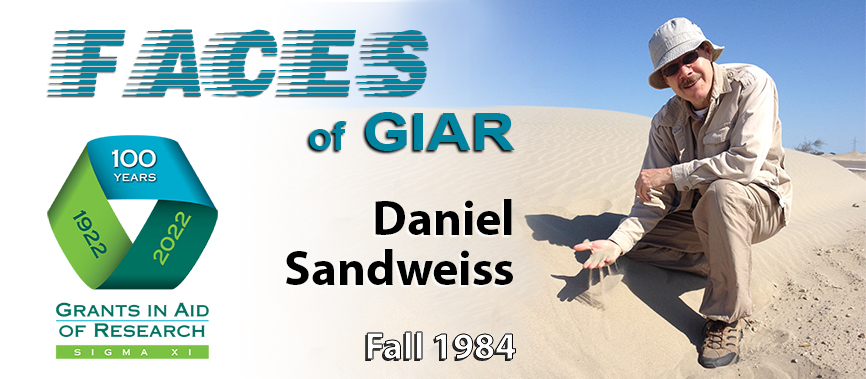December 19, 2022

Grant: $300 in Fall 1984
Education level at the time of the grant: PhD student
Project Description: At the start of my graduate student career, I spent a year in Peru on a Fulbright fellowship. One outcome of my research was a hypothesis that Peruvian beach ridges were the result of massive sediment pulses driven by El Niño rainfall and flooding, rather than the result of sequential uplift as had been postulated by others. The most recent ridge is near the shore, and ridges get older as one moves inland. To eliminate the uplift hypothesis, I needed to show that the ridges didn’t rise sequentially inland. The GIAR award allowed me to hire a professional topographer to work with me to create a precision profile across the ridges. The results showed that the ridges did not rise sequentially from shore to interior. This, in turn, helped support my El Niño origin hypothesis.
How did the grant process or the project itself influence you as a scientist/researcher?
The GIAR-supported work led to a paper in the inaugural issue of the journal Geoarchaeology and helped launch one of my main streams of research, on the prehistory of El Niño. My colleagues and I have published on this topic in Science, Proceedings of the National Academy of Sciences, Geology, and elsewhere.
Where are you now?
After finishing my PhD in 1989, I worked for three years on an archaeological project in Peru, organized by Thor Heyerdahl. This led to many interesting experiences, including several trips to Cuba in the early 1990s, during one of which I had coffee and a conversation with Fidel Castro. In 1992, I was a postdoc at the Carnegie Museum of Natural History, and since 1993 I have been a professor at the University of Maine with a joint appointment in anthropology and the Climate Change Institute—a direct outcome of working on the prehistory of El Niño.
Students may apply for Sigma Xi research grants by March 15 and October 1 annually at www.sigmaxi.org/giar.